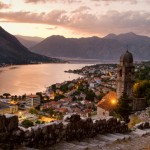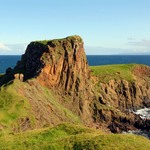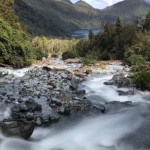In his Guide To Zhangjiajie Rupert Parker Revisits The Natural Wonders Of Hunan.
If you’ve never been to China, then of course your itinerary must include Beijing and the Great Wall, Sian and the Terracotta Warriors, Shanghai and its Bund and perhaps a cruise on the Yangtze River. Of course these are the country’s greatest hits but, up there with the best of them, are the natural wonders of Zhangjiajie in Hunan.
This land-locked province, in the south central part of the country, is surrounded by mountains, with the fertile Yangtze River to the north. Think agricultural China, a landscape of paddy fields and tea terraces. It’s also the homeland of Chairman Mao who was born in a small country village and studied in the capital.

I’ve been here before in 2019 and liked it so much that I want to see more. International flights arrive in Hunan’s capital, Changsha but my destination is in the north west of the province. No matter, it’s a fast two hour bullet train ride to the city of Zhangjiajie at speeds of over 200km/h. This is close to what they call the Wulingyuan Scenic and Historic Interest Area – it’s huge, covering 185 square miles and was UNESCO listed in 1992.
I set out from Zhangjiajie on the world’s longest cable car, a 7.5km aerial journey to Tianmen Mountain. As I ascend, there are panoramic views of the surrounding karst landscape and the road beneath, climbing up through 99 hairpin bends. In the side of the mountain is Tianmen Cave, or Heaven’s Gate, a circular void, wide enough for a fighter jet to fly through. Measuring 131.5m tall and 57m wide, it’s the world’s highest natural arch.
From the cable car, the Glass Skywalk, a 60m long glass platform, clings to the side of the cliffs. Walking on the transparent glass feels like stepping into the void, a test of courage, if you stare down to the valley floor, a whopping 140Om below. A series of escalators, cut deep inside the mountain, brings me to the foot of the arch, perfect for photos. From here, 999 steep steps lead downwards to a second cable car.

An hour’s drive from the city is Zhangjiajie National Forest Park, a UNESCO Global Geopark, known for its towering sandstone pillars clad in greenery. I start by taking the glass sided Bailong Elevator, the world’s tallest outdoor lift, rising up 326m, with a stunning view of the pinnacles. Throughout the park there are more than 3,000 of these narrow limestone pillars, many over 200m high.
The most famous of these is Hallelujah Mountain, renamed after the huge success of Avatar in China. Local tourists hire colourful costumes of the indigenous Tujia people to have their pictures taken. Concrete paths lead to various viewpoints and there are shuttle buses, should you feel weary.
Recently Zhangjiajie has also become a hotspot for adventure seekers centred around the Glass Bridge, the world’s longest and highest, spanning 430m between the cliffs of the Grand Canyon. Dare to look down and, 300m beneath your feet, is the lush river valley. Looking up, the views are spectacular, with limestone peaks stretching into the far distance.
When you’ve crossed the bridge, you have the option of returning to the other side by zip line. It’s not for the faint hearted – after being fitted with a safety harness, the initial rush of speed is exhilarating. But you’re soon gliding gently through the air with the wind in your face and the canyon below. On the other side there’s more fun – a winding transparent tube slide gets you down the mountain, literally by the seat of your pants.

Down below, at the foot of the mountains, Boafeng Lake, or the “Jade Pool of Heaven,” is an artificial marvel, created by a dam project. Its crystal clear waters reflect the surrounding karst peaks rising dramatically upwards, frequently topped by mist.
A boat trip takes me past strategically situated locals dressed in Tujia attire, calling out traditional greetings. It’s all a bit too touristy for my taste but the natural beauty more than makes up for it. Macaques hang from the trees and colourful birds whirl overhead.

As I take the bullet train back to Changsha, it’s easy to see the great leap forward that the country has made. Identikit tower blocks cram new town centres, giant roads on stilts straddle the paddy fields and everything is sparklingly pristine. It’s a far cry from my first trip in 1975 when it was all bicycles and blue Mao jackets. But look beneath the surface and China is still one of the most fascinating places on earth.
Tell Me More About this Insider Guide To Zhangjiajie
Hainan Airlines flies direct to Changsha from Heathrow.
Changsha and Zhangjiajie are included in Wendy Wu’s tours Gems of China and National Treasures of China starting from £3,990.






